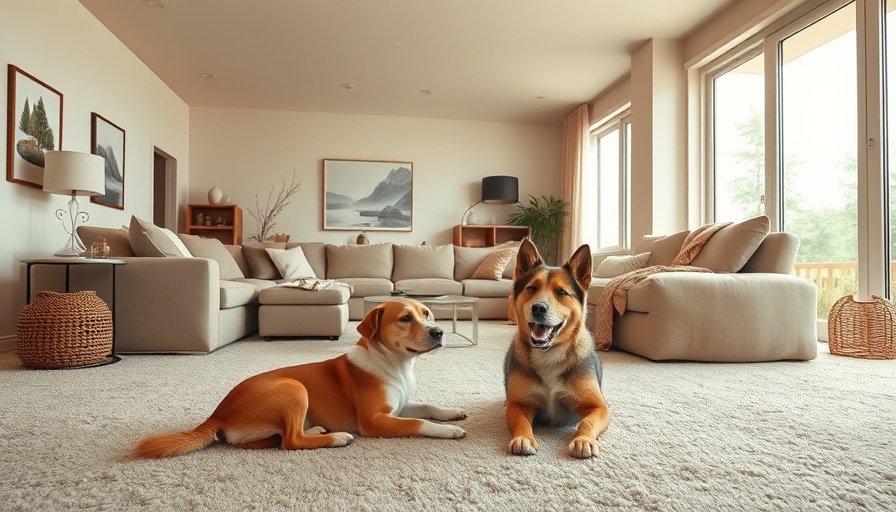
Reviving the Comfort of Home: The Resurgence of Wall-to-Wall Carpeting
As homeowners seek to combine comfort and style within their living spaces, wall-to-wall carpeting is making a notable comeback. Once perceived as a passé choice, advancements in carpet technology and design are once again rendering this carpet style a top contender in modern homes.
Why Wall-to-Wall Carpeting is Making a Comeback
The popularity of wall-to-wall carpets is largely driven by the advancements from brands like Lifeproof. Their innovations, such as the Lifeproof with Petproof Technology, showcase luxury weaves with superior stain resistance and myriad styles. Not only do these carpets offer aesthetic benefits, but they also enhance the functionality of spaces, making them ideal for various lifestyles.
The Alluring Benefits of Wall-to-Wall Carpeting
Wall-to-wall carpeting is not just about aesthetics; it also contributes to the overall functionality of a home. Interior designer Cathleen Gruver emphasizes that carpets provide insulating properties, helping to keep homes warm during drafty times and safeguarding against slips and falls.
Additionally, wall-to-wall carpeting has acoustic benefits. It absorbs sound, which is particularly valuable in bedrooms or media rooms where noise levels can disrupt harmony. Unlike scattered rugs, wall-to-wall carpeting creates a more cohesive and finished appearance.
Rooms That Benefit from Wall-to-Wall Carpeting
Bedrooms top the list for the best spaces to install wall-to-wall carpets. Gruver notes the comforting feeling of stepping onto plush carpet first thing in the morning. Carpets also shine in basements, media rooms, and children’s play areas, where warmth and sound control are paramount.
For active spaces, like play areas or stairs, soft carpeting such as Lifeproof Hazelton II is recommended. It ensures safety and comfort, allowing kids to sit and play on the floor without worries.
Choosing the Perfect Wall-to-Wall Option
The evolving carpet market offers numerous styles in texture, pattern, and color, ensuring that fitting the desired aesthetic is straightforward. Gruver advises homeowners to consider their lifestyle when selecting the right type. With children and pets, durability becomes crucial—opting for high-density fibers and tightly twisted yarns can mitigate wear and tear.
The importance of pile height cannot be overstated; lower piles are recommended for high-traffic areas, while higher piles add a touch of plush luxury to private spaces like bedrooms.
Future Trends in Carpeting
The future of carpeting reflects a blend of style and technology. Homeowners will increasingly seek options that marry aesthetics with resilience. Carpets like Lifeproof with Petproof Technology’s Beyond Cozy, which is resistant to stains and spills, highlight the industry's direction towards practicality without compromising glamour.
Final Thoughts: Why You Should Consider Wall-to-Wall Carpeting Now
As fashions cycle and technology improves, wall-to-wall carpeting emerges once again as an excellent contender for modern interiors. Whether it’s for improved comfort, warmth, or sound dampening, there are numerous compelling reasons to consider this flooring option. Embrace the stylish and practical benefits it can bring to your home! If you're ready to transform your space into a cozy retreat filled with luxurious comfort, wall-to-wall carpeting might just be the way to go.
 Add Row
Add Row  Add
Add 




Write A Comment